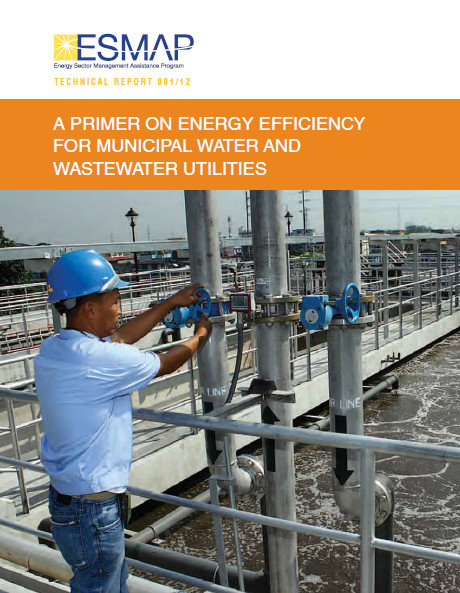A Primer on Energy Efficiency for Municipal Water and Wastewater Utilities
 |
rapport Feb 2012 ; 72 pages
Ed. ESMAP - Washington
Téléchargeable sous format: PdF
Téléchargeable chez l'éditeur
Page de présentation d'un éditeur
Abstract:
This primer is concerned with energy use and efficiency of network-based water supply and wastewater treatment in urban areas. It focuses on the supply side of the municipal water cycle, including the extraction, treatment, and distribution of water, and collection and treatment of wastewater—activities which are directly managed by water and wastewater utilities (WWUs). Demand-side issues of the municipal water cycle, including water-use efficiency and water conservation, are referred to where linkages to energy efficiency (EE) are critical, but are not discussed in detail.
Electricity costs are usually between 5 to 30 percent of total operating costs among WWUs. The share is usually higher in developing countries and can go up to 40 percent or more in some countries. Such energy costs often contribute to high and unsustainable operating costs that directly affect the financial health of WWUs.
Improving EE is at the core of measures to reduce operational cost at WWUs.
Mots clefs: |
énergie (CI) (DT) (OP) (ope) , gaspillage/économie d'eau (CI) (DT) (OP) (ope) , gestion - management (CI) (DT) (OP) (ope) |
Editeur/Diffuseur: |
|
ESMAP
-
Energy Sector Management Assistance Program - Washington - Etats Unis |
En cas de lien brisé, nous le mentionner à communication@pseau.org